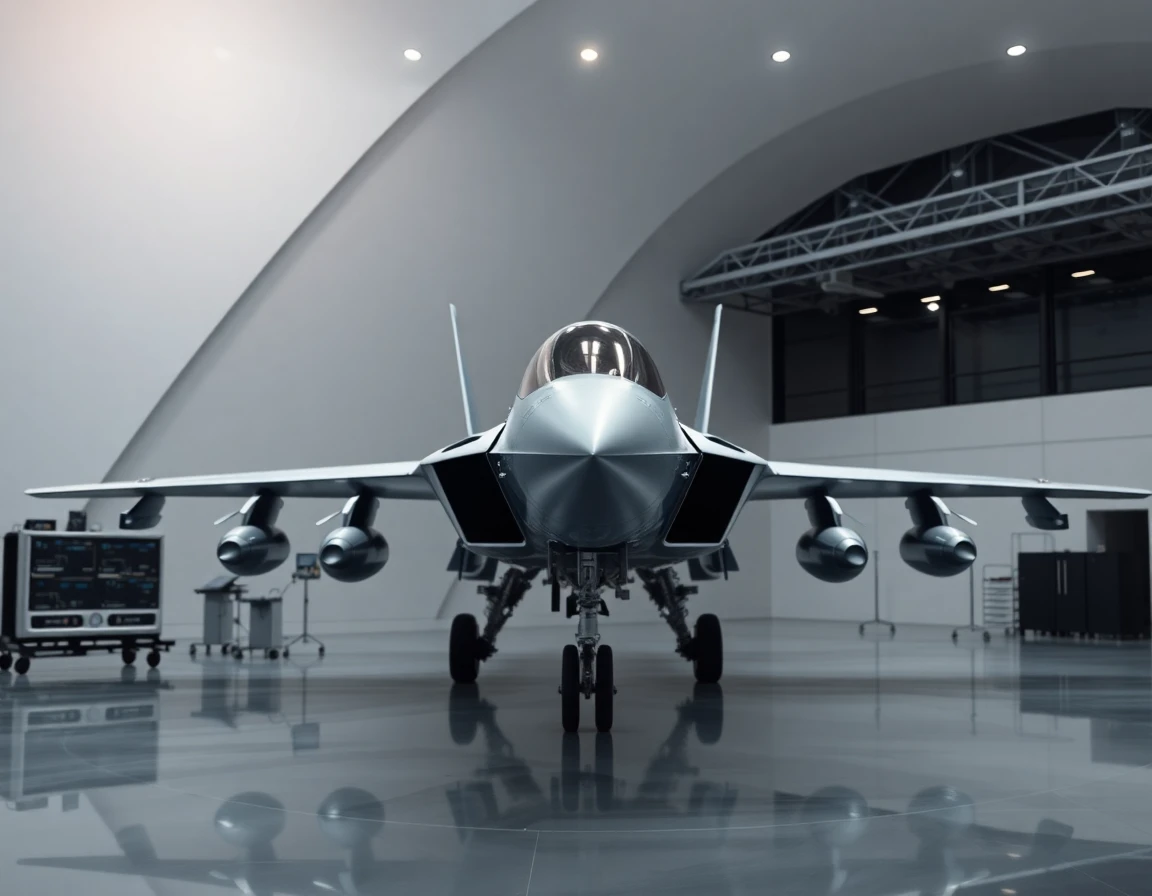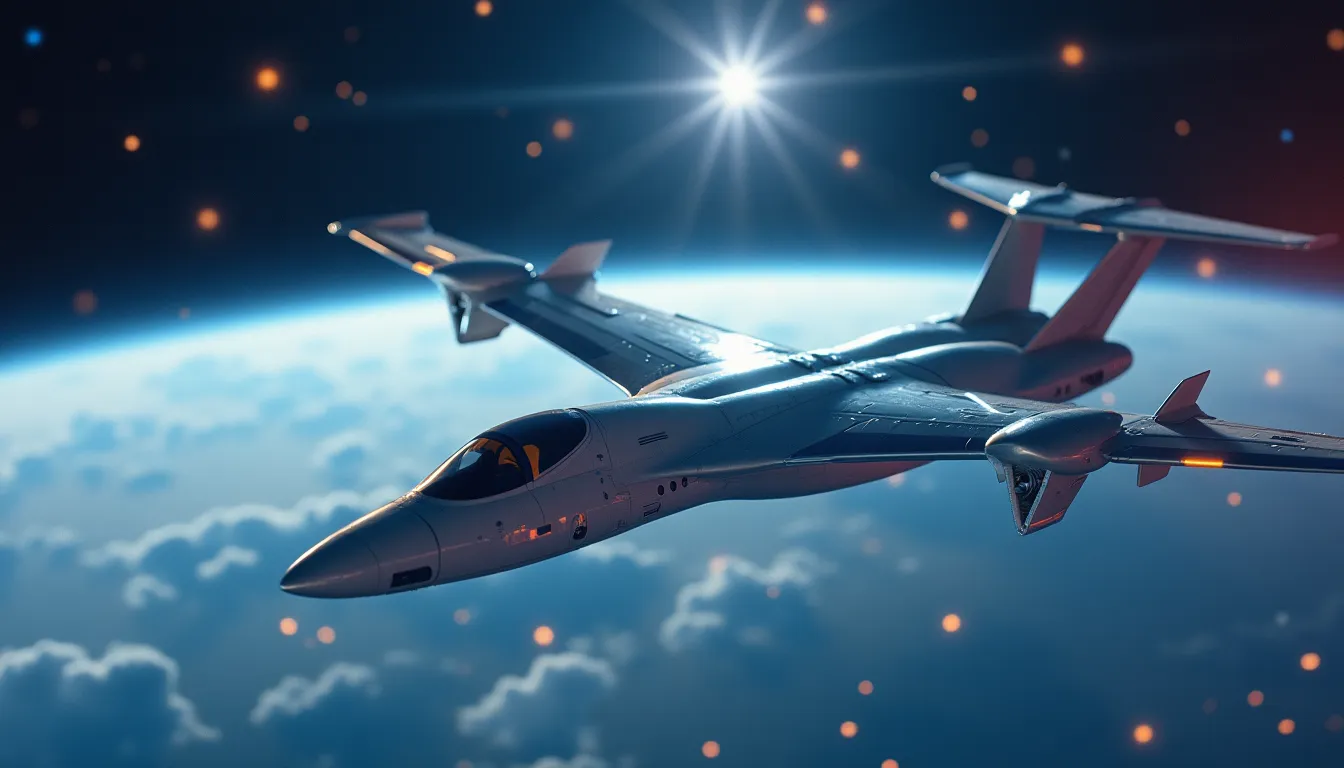Recent developments in the global aerospace, defense, and technology sectors have underscored a transformative period marked by significant advancements in military aviation, missile defense systems, and the integration of artificial intelligence (AI) in unmanned systems. This article delves into the latest updates, innovations, and industry events that are shaping the future of defense capabilities.
Military Aviation Enhancements
Hellenic Navy’s P-3B Orion Upgrade
The Hellenic Navy recently celebrated the successful maiden test flight of its upgraded P-3B Orion aircraft, a pivotal step in re-establishing Greece’s long-range naval surveillance capabilities. This upgrade, leveraging advanced avionics and sensor technology, is expected to enhance Greece’s maritime security amidst growing regional tensions. The aircraft is equipped with an Advanced Sensor Module, integrating a three-axis gyroscope, accelerometer, and magnetic sensor for superior motion detection and stability.
U.S. Marine Corps Deployments
In a strategic move to bolster airpower in the Indo-Pacific region, the U.S. Marines have deployed F/A-18D Hornet fighter jets to Japan. This deployment aims to enhance deterrence against potential threats, particularly from China, and signifies the ongoing commitment of the U.S. to maintain a robust military presence in the area.
Turkish Air Force’s T-70 Induction
The Turkish Air Force has inducted its fourth national T-70 utility helicopter, a significant achievement for Turkey’s indigenous defense capabilities. Despite facing challenges related to U.S. policy, this induction underscores Turkey’s commitment to developing a self-sufficient military aviation sector.
Enhanced Missile Defense in Guam
In response to escalating threats, the United States has finalized plans for a state-of-the-art 360-degree Enhanced Missile Defense System in Guam. This system is designed to counteract potential missile threats from adversaries in the Pacific, reinforcing the U.S. strategic posture in the region.
Advancements in Missile and AI Technology
Lockheed Martin’s Missile Innovations
Lockheed Martin is leading the charge in missile technology with its advancements in the production of the Joint Air-to-Ground Missile (JAGM) and Hellfire II missiles. These missiles are equipped with multi-mode guidance capabilities, utilizing both radar and laser for precision strikes in all weather conditions. The integration of these technologies into unmanned aerial vehicles (UAVs) enhances their operational effectiveness on the modern battlefield.
DARPA’s AI for Uncrewed Aircraft
On another front, STR is making significant progress on a DARPA AIR contract aimed at developing AI systems for swarming uncrewed aircraft. This technology could revolutionize combat operations by enabling autonomous drone fleets to conduct complex missions without direct human control, thus enhancing battlefield efficacy.
Commercial Aerospace Developments
JetBlue’s Operational Efficiency
JetBlue has adopted predictive analytics from Collins Aerospace to optimize flight operations, resulting in increased efficiency and reduced operational costs. This integration reflects a broader trend in the aviation industry towards leveraging data analytics to enhance performance.
New Space Weather Observatories
NASA and NOAA are set to launch new space weather observatories aimed at improving predictions of solar threats that could impact aerospace and defense systems. This initiative highlights the growing recognition of space weather’s critical role in ensuring operational readiness in military and commercial aviation.
Major Industry Event: DSEI UK 2025
The Defence and Security Equipment International (DSEI) 2025 event, scheduled for September 9-12 in London, is poised to be the largest ever, attracting over 60,000 visitors and 1,700 exhibitors. This event will focus on “Preparing the Future Force,” emphasizing the integration of startups, supply chains, and international partners within the defense ecosystem. A significant highlight will be the showcase of cyber and electromagnetic operations capabilities, essential for modern warfare, including the innovative “digital targeting web” and developments from the Defence Cyber and Electromagnetic Force.
Challenges in the F-35 Program
The F-35 fighter program continues to encounter challenges, with the Department of Defense reporting delivery delays due to hardware and software issues related to the Technology Refresh 3 upgrade. Fully combat-capable F-35s featuring Block 4 capabilities are not expected until 2026, with current deliveries providing limited combat functionality. These delays could impact the operational readiness of allied forces relying on this advanced platform.
Innovations in Aerospace Technology
GE’s Investment in Hybrid-Electric Propulsion
General Electric has announced a substantial investment of $300 million in Beta Technologies’ hybrid-electric propulsion systems, which promise to revolutionize both civil and military aviation with reduced emissions and increased fuel efficiency.
Phoenix Air’s Starshield Integration
Phoenix Air has successfully equipped a Learjet with the government Starlink Starshield system, providing real-time connectivity for military missions. This integration reflects the growing importance of secure and reliable communication systems in modern military operations.
Hydrogen-Powered Aviation Solutions
Blue Spirit Aero has unveiled the Dragonfly family of hydrogen-powered aircraft, incorporating hydrogen fuel cells and electric motors to deliver innovative solutions for sustainable aviation. This development aligns with the industry’s increasing focus on environmentally friendly technologies.
AI-Powered Military Drones
Parrot has launched a military drone featuring AI autopilot capabilities, specifically designed for the ongoing conflict in Ukraine. This drone enhances operational autonomy, allowing for more effective surveillance and reconnaissance missions.
Conclusion
The aerospace and defense sectors are witnessing unprecedented advancements, driven by technological innovation and strategic military enhancements. As nations adapt to emerging threats, the integration of advanced systems in aviation, missile defense, and AI technologies will redefine the landscape of global defense capabilities. Looking ahead, the ongoing developments in hybrid-electric propulsion systems and AI-driven unmanned aerial vehicles will play a critical role in shaping the future of military operations and commercial aviation.
References
-
Global Air Force Aerospace Defense Aviation News (armyrecognition.com) - 9/8/2025 On September 3, 2025, Lockheed Martin Europe confirmed that the Hellenic Navy’s upgraded P-3B Orion had completed its maiden test flight, marking a… Read more …
-
Military Aerospace: Home (www.militaryaerospace.com) - 9/8/2025 STR moves forward on DARPA AIR job to develop artificial intelligence (AI) for swarming uncrewed aircraft · John Keller. Sept. 8, 2025.
-
DSEI UK 2025 will be the biggest ever: Here’s what to expect (aerospaceglobalnews.com) - 9/8/2025 DSEI 2025 opens at ExCeL London from 9–12 September, bringing a record 60,000 visitors and 1,700 exhibitors. The show promises major …
-
A Sobering Report on the DoD’s Largest Weapons Program (dsm.forecastinternational.com) - 9/8/2025 The overall U.S. acquisition plan calls for 2,456 production F-35s across all three variants fielded by the Air Force, Navy, and Marine Corps.
-
Aerospace & Defense | Aviation International News (www.ainonline.com) - 9/4/2025 September 2, 2025. Jianhua Liu, Andrew Schneider, Chris Deputy. People in Aviation—September 2025. Giovanni Tomassini is CEO of Baykar Piaggio Aerospace.



